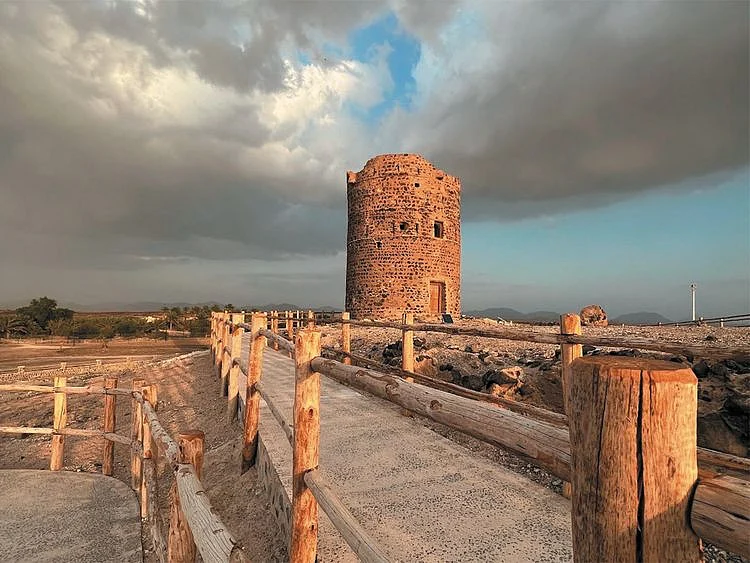Three Sharjah sites added to Islamic World Heritage List
The two forts and wadi settlement tell stories of centuries-old trade, irrigation, culture

Sharjah: Dibba Al Hisn Fort, Fili Fort and Wadi Shees in Sharjah emirate have been added to the Islamic World Heritage List, it was revealed on Wednesday.
The Sharjah Archaeology Authority (SAA) announced that ICESCO (Islamic World Educational, Scientific, and Cultural Organisation) has inscribed the sites to the List in recognition of their the cultural and historical significance.
This achievement reflects the importance of these sites in strengthening Islamic and cultural identity and their role in preserving history and heritage for future generations. The announcement was made by the ICESCO Heritage Committee, which registered 91 historical sites and cultural elements on its heritage list, including the three locations from Sharjah.
A total of six files are now in the Islamic World Heritage List, namely ‘Sharjah, the Gateway of the Trucial States’, Mleiha Archaeological Site, Al Dhaid Fort and Falaj, Fili Fort, Wadi Shees, and Dibba Al Hisn Fort.
Both the SAA and the Authority for Initiatives Implementation and Infrastructure Development (Mubadara) submitted nomination files to ICESCO during the 12th meeting of the Islamic World Heritage Committee, held in Shusha, Azerbaijan, which was celebrated as the Islamic World Cultural Capital for 2024. These files emphasised the archaeological and historical significance of the nominated sites, alongside their architectural elements and reports on their preservation and conservation status.
SAA Director-General Eisa Yousif stated: “This inclusion is the result of close collaboration [with Mubadara] in the field of preserving tangible cultural heritage in Sharjah. These sites reflect international recognition of their historical and cultural significance, showcasing Sharjah’s relentless efforts to protect its rich cultural heritage. These are not merely historical landmarks but are integral parts of Sharjah’s and the UAE’s cultural identity.”
He also noted that Dibba Al Hisn Castle, Fili Fort, and Wadi Shees are not just historical places but living testimonies to the interactions of civilisations that have flourished in the region over the centuries. These sites tell stories of societal evolution, trade, and traditions that have shaped the identity of the area.
Dibba Al Hisn Fort and Settlement
Dibba Al Hisn Fort and Settlement stand as a site of cultural exchange and human settlement over five centuries.
This site, rich in architectural features and artefacts, reflects a history where people sought refuge, engaged in trade, and sustained local markets. The fort safeguarded key trade routes, supporting fishing, agriculture, and commerce, with evidence of international trade through artefacts from China, India, and Europe.
From the 16th century onward, the site became a centre of sea-based commerce, bolstered by the production of date molasses and the development of agriculture. Its legacy as a hub of trade and cultural interchange, particularly through its strategic location, makes it an essential historical and heritage site.
Fili Fort
Fili Fort is distinguished by its strategic position, which has been pivotal in the region’s protection and security throughout history. The surrounding areas of Fili are celebrated for their historic “aflaj” irrigation system, a vital feature that has sustained life in the desert environment for centuries. The historic Fili Fort was constructed to oversee these crucial water systems and date palm plantations, safeguarding the caravans travelling from Al Dhaid to Al Ain and the Buraimi Oasis, as well as protecting the coastal trade routes of Oman.
Moreover, Fili’s location on the caravan route linking the western and eastern coasts of the Arabian Peninsula underscores its role in defending the important Hajar Mountains’ paths, ensuring the safety of pilgrims and traders alike. Fili’s heritage embodies stories of global significance, illustrating its role in preserving local communities and securing trade routes. It also sheds light on notable events of the 19th and 20th centuries.
Wadi Shees
Wadi Shees is located near the eastern coast of the UAE, encompassing the village of Shees, about 17km from the city of Khor Fakkan and 95km from Sharjah.
The area is known for its natural beauty, characterised by towering mountains and farms irrigated by traditional aflaj systems — testaments to ancient human ingenuity in water management. The region is also home to rare bird species that still inhabit its farms, with several environmental organisations undertaking efforts to preserve and study them.
The area boasts landmarks such as Al Istiqama Mosque, old houses of the village, castles, and farms connected to the Traditional Irrigation System (Falaj and Wadi Shees). Shees holds scientific value on a global scale, reflecting environmental and geographical diversity that blends the Hajar Mountains and Aflaj, resulting in a plant cover and a habitat for rare birds and animals. The area is a model of environmental diversity and freshwater ecosystems that have helped preserve endangered plants and animals, making it a site of global importance for environmental researchers.
Sign up for the Daily Briefing
Get the latest news and updates straight to your inbox
Network Links
GN StoreDownload our app
© Al Nisr Publishing LLC 2025. All rights reserved.